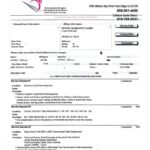Experiencing issues with your 2006 Nissan Frontier can be frustrating, especially when dashboard lights illuminate and performance suffers. One code that might surface during a diagnostic scan is the U1000 OBD2 code. This code, while seemingly generic, can point to a range of underlying problems within your Nissan Frontier’s communication network. Understanding what the U1000 code signifies specifically for your 2006 Nissan Frontier is the first step towards effective diagnosis and repair.
The U1000 code, in general terms, indicates a communication malfunction on the Controller Area Network (CAN) bus. This network is essentially the central nervous system of your vehicle, allowing various electronic control modules (ECMs) to communicate and coordinate functions. In a 2006 Nissan Frontier, this network is crucial for systems ranging from the engine and transmission control to the anti-lock brakes and body control systems.
When the U1000 code appears in your 2006 Nissan Frontier, it signifies that one or more modules on the CAN bus are unable to communicate properly. This communication breakdown can manifest in various symptoms, depending on which systems are affected. While a generic OBD2 scanner will only display the U1000 code, a more advanced scan tool might provide additional subcodes or related codes that can help pinpoint the source of the communication issue.
Common Symptoms Associated with the U1000 Code in a 2006 Nissan Frontier:
- Check Engine Light or Service Engine Soon Light: This is often the first and most noticeable sign.
- Transmission Problems: Shifting issues, erratic gear changes, or the transmission getting stuck in one gear. This is particularly relevant to discussions surrounding TCM (Transmission Control Module) issues.
- Stalling or Hesitation: Engine performance may become erratic, leading to stalling, especially at idle or during acceleration.
- ABS or Brake Light Illumination: Problems with the Anti-lock Braking System can be linked to communication faults.
- Dashboard Warning Lights: Various warning lights might illuminate simultaneously or intermittently.
- No Start Condition: In some severe cases, a communication breakdown can prevent the engine from starting.
- Multiple Error Codes: Alongside U1000, other seemingly unrelated error codes may appear, reflecting the widespread nature of a communication issue.
It’s important to note that these symptoms are not exclusive to the U1000 code and can be indicative of other problems. However, when combined with a U1000 code reading from your OBD2 scanner on a 2006 Nissan Frontier, they strongly suggest a communication network problem.
Potential Causes of the U1000 Code in a 2006 Nissan Frontier:
Diagnosing the U1000 code in your 2006 Nissan Frontier requires a systematic approach, as the root cause can be varied. Here are some potential culprits:
- Faulty Control Modules (ECM, TCM, ABS Module, etc.): One of the modules on the CAN bus might be failing, disrupting communication. In the context of the original user’s experience, a failing TCM or ECM is a significant consideration.
- Wiring and Connector Issues: Damaged, corroded, or loose wiring and connectors within the CAN bus network are common causes. This includes shorts, open circuits, and high resistance in the wiring.
- CAN Bus System Problems: The CAN bus itself can have faults, including issues with terminating resistors or physical damage to the bus lines.
- Power Supply or Ground Issues: Insufficient or unstable power supply or grounding to the control modules can lead to communication errors.
- Software or Programming Glitches: In rare cases, software glitches within a control module can cause communication problems.
Diagnosing and Resolving the U1000 Code:
- Professional Scan: While a basic OBD2 scanner reads the U1000 code, a professional-grade scan tool is essential for a deeper diagnosis. This tool can access more detailed information, including subcodes and live data from the CAN bus.
- Visual Inspection: A thorough visual inspection of wiring harnesses, connectors, and control modules is crucial. Look for any signs of damage, corrosion, or loose connections.
- CAN Bus Testing: Using specialized tools, technicians can test the integrity of the CAN bus itself, checking for proper voltage levels, resistance, and signal quality.
- Module Testing: Individual control modules can be tested to determine if they are functioning correctly and communicating on the network.
- Wiring and Connector Repair: Any identified wiring or connector issues need to be addressed. This might involve cleaning connectors, repairing damaged wires, or replacing faulty components.
- Module Replacement (If Necessary): If a control module is diagnosed as faulty, replacement and reprogramming may be required.
Addressing Dealership Concerns:
The original user’s experience highlights a common frustration with dealership service. When faced with a U1000 code and related symptoms in a 2006 Nissan Frontier, it’s wise to:
- Seek a Second Opinion: If you are unsure about a diagnosis, especially one as significant as a full transmission replacement, getting a second opinion from another reputable mechanic or specialist is advisable.
- Inquire About Specific Diagnostic Steps: Ask the service provider to explain the diagnostic steps they took to arrive at their conclusion. Understanding their process can help you feel more confident in the diagnosis.
- Discuss Alternatives: Explore all potential causes, including TCM or ECM issues, before committing to major repairs like transmission replacement.
- Document Everything: Keep detailed records of all service visits, diagnoses, and repairs.
Conclusion:
The U1000 OBD2 code in a 2006 Nissan Frontier indicates a communication problem within the vehicle’s CAN bus network. While it can be triggered by various issues, ranging from wiring problems to faulty control modules, understanding the potential causes and diagnostic steps is crucial. If you encounter this code, a thorough and professional diagnosis is essential to pinpoint the root cause and ensure effective repair, getting your Nissan Frontier back on the road with confidence. Remember to seek expert advice and explore all possibilities before undertaking major repairs.
